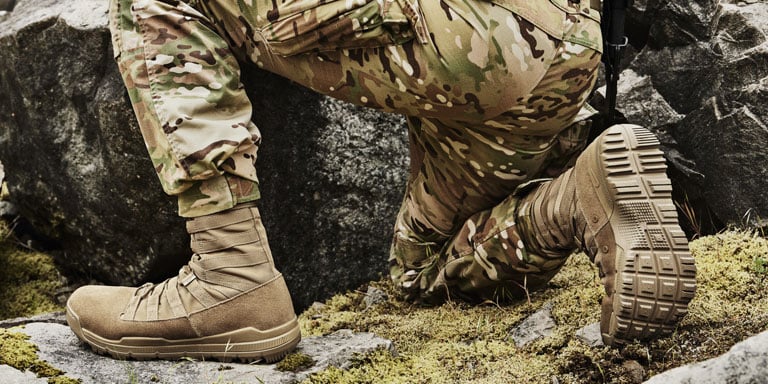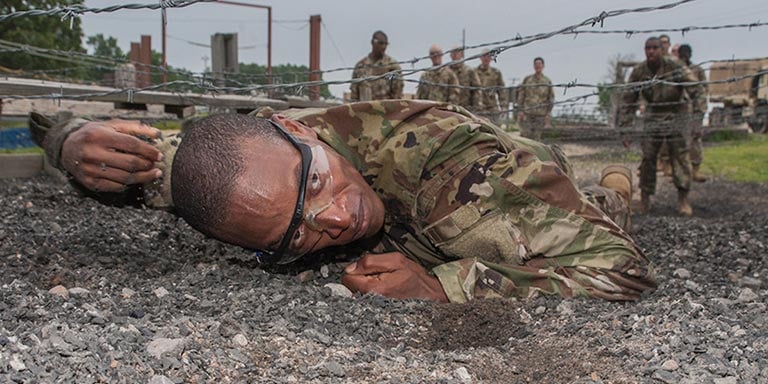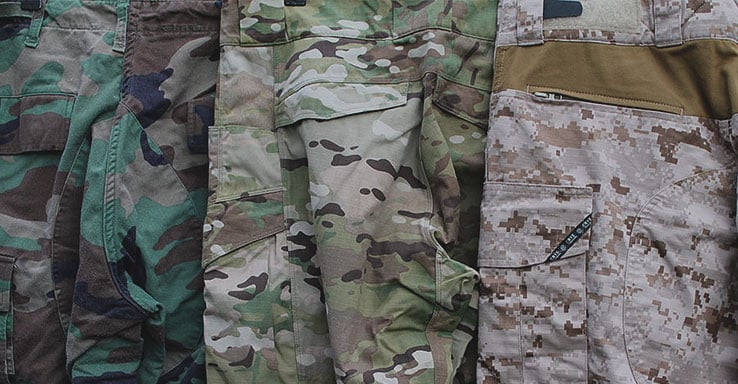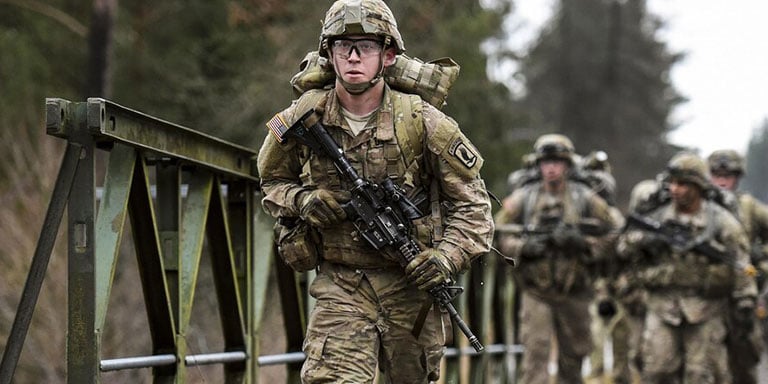
Ruck marches are demanding if you're well-prepared — and grueling if you aren't. Preparedness starts with long-term habits of good physical and mental conditioning.
Of course, carefully selecting and efficiently packing your gear before setting out will help, too. In this guide, we'll highlight the most important things you can do before a ruck march to make it more pleasant (or at least less unpleasant).
General Physical Fitness

Exercise routines designed to prepare you for the particular challenges of a ruck march are important (read more about training with a plate carrier), but your most basic physical needs are arguably even more so. In fact, the benefits you get from physical training will be greatly diminished if your food and sleep habits aren't squared away.
Sleep
Prioritize getting a full, uninterrupted night's sleep at roughly the same time every night (to the extent that that's possible in military life). If nothing else, do your best to carve out time for restful sleep the night before the march.
If you don't already, abstain from using your computer or phone for at least an hour before bed. Many people fall asleep faster, stay asleep more consistently and feel better in the morning after limiting their use of electronic devices before bed. If you have trouble sleeping, try melatonin or other non-sedative sleep aids. Don't hesitate to make an appointment with your on-base physician if you need extra help establishing or maintaining good sleep habits.
Diet
Managing your diet is a bit trickier and more context-sensitive. The science of nutrition still isn't as well-understood as we're often led to believe. There are certain general principles that seem to be thoroughly supported by good science (e.g., it's best to eat little or no sugar), but in many respects, we don't yet understand how or why nutritional needs vary from person to person.
That being said, it's likely best and easiest to stick to the basics unless you've already dialed in a diet that you know works well for you. Try to make fresh meat and vegetables the cornerstones of most meals. If you don't or can't eat meat, make sure you get adequate protein from other sources. Minimize grains, fruit, sugar and other sources of simple carbs, which promote fat storage and make poor long-term energy sources. When your body is accustomed to running on clean fuel, ruck marches and other intense physical workouts are much easier.
Hydration
Conventional wisdom suggests that everyone should drink eight cups (64 oz.) of water per day. That's probably a good general guideline, but the exact amount of water you need depends on many factors; as long as you drink enough to never feel especially thirsty, you're in the ballpark. In any case, staying hydrated is a long-term, daily endeavor. Drinking a bunch of water the night before the march won't help much if you normally aren't well-hydrated — it could even make things worse by increasing your susceptibility to cramps and other unpleasant problems. Shop Hydration Packs
Training for the March
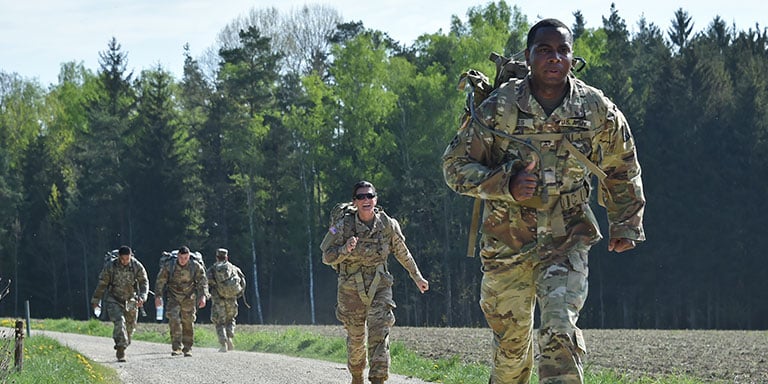
Of course, general cardiovascular and strength training will always be helpful in preparing for a ruck march. However, there are a few extra, more narrowly focused training strategies that might produce better results, especially in combination with regular PT.
Start Slow with Weight Training
The whole point of a ruck march is to show that you can walk long distances while carrying a lot of gear (usually upwards of 60 pounds). To begin with, load your pack lightly — 25 pounds or less — and focus on good technique over distance. Find a route with terrain that closely resembles the terrain you expect to encounter during the march — or, better yet, start walking along the actual march route, if you know it. Gradually add weight to your pack over time, and start marching with your other gear when you feel ready.
Walk with a smooth, even gait that doesn't disproportionately stress any one muscle group. When walking up steep hills, let your thigh muscles do most of the heavy work, not your knees or ankles; zig-zagging might also help if the hill is particularly steep. When going downhill, lean back to keep your center of gravity perpendicular to the flat ground and put more weight on your heels to stay balanced.
In the early days of training, rest as much as you need to, even if you won't be permitted to rest during the actual march. Push yourself, but not so hard as to experience severe fatigue. In the long run, you'll be stronger and develop more endurance if you avoid completely draining your batteries during workouts.
Never run with a fully-loaded rucksack or while carrying other heavy gear (again, when you have the option). Running with heavy items jostling around in your pack is a good way to strain and injure your back, neck and shoulders.
No Zero Days
For now, train with only one goal in mind: "no zero days." Many soldiers, Marines, airmen, and sailors set lofty fitness goals far beyond their current capabilities and then feel demoralized when they don't reach them. When you're just beginning your ruck march training, don't attach any numbers to your training goals. Instead of saying "I'm going to march 5 miles today," just say "I'm going to show up and march today."
There's real power in thinking this way. It's easy to fail to achieve a big goal, especially when you haven't yet hit all the smaller goals along the way. It's equally easy to make excuses when the finish line is way over the horizon ("Of course I didn't march 5 miles today, I haven't even done a 2-mile march yet. Who could blame me?"). By simply showing up every day (barring pre-planned rest days) and letting go of high expectations, you build good, consistent habits that will effectively grow your skills and endurance over time. Marching five or ten miles will be much less daunting once you have dozens of shorter marches under your belt.
Prepping Your Gear
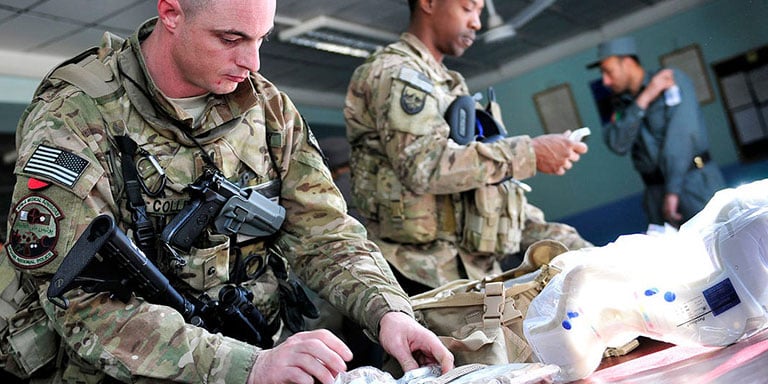
Several weeks before the march, gather all the gear you'll be expected to carry and inspect it carefully. Identify anything that's broken or damaged — particularly straps and buckles — and submit it for repair or replacement if there's time.
However, if you've been in the military for any length of time, you know that it's often difficult to get your equipment repaired or replaced in a timely manner (or at all). Now's the time to teach yourself to sew. It's an easy skill to learn, supplies are cheap, and it could save you a lot of time and money in the long run. Ruck marches are much less tolerable with broken gear, so take the initiative and repair what you can beforehand if you have any doubts about the quartermaster's turnaround time.
Give yourself at least two weeks to break in your boots if they're new. Walk around in them all day, every day until they stop feeling stiff. High-end inserts are always a good investment, too. Pick up some gel inserts or see a podiatrist to get custom orthopedic inserts if you have a history of foot problems. Be sure to read our guide on how to choose military boots if you don't have a pair yet.
On the day of the march, be sure to double up on socks. Wear a tight-fitting pair of thin socks underneath your normal, thicker ones, and bring extra pairs of both kinds. The inner pair creates a layer of protection that will help prevent sores and blisters. Shop Socks
Take some time to pack your bag efficiently. Place the heaviest items on the bottom and lighter items on top. Distribute the weight evenly from left to right and use your socks, shirts, and other soft items as a layer of padding between your back and the pack's hard or sharp contents. If you need help finding a good pack, take some time to read about how to choose a tactical backpack.
Lastly, bring these essential items, even if they're not on your official packing list: nutrient-dense food that doesn't weigh much (such as peanut butter or jerky), foot and rash care supplies (like talcum powder and cortisol ointment), extra water, electrolyte drink mix and hygiene wipes. Regularly clean your armpits, thighs, and other friction hotspots during the march to help prevent sores and rashes.
You're Ready to March!
If you take the time to train and pack well, your next ruck march will be much less difficult for you than for many of your comrades. While you're still in the preparation phase, our guides on preparing for Basic Training and the Army's Extended Cold Weather Clothing System may come in handy, too.
Did you find this article helpful?



